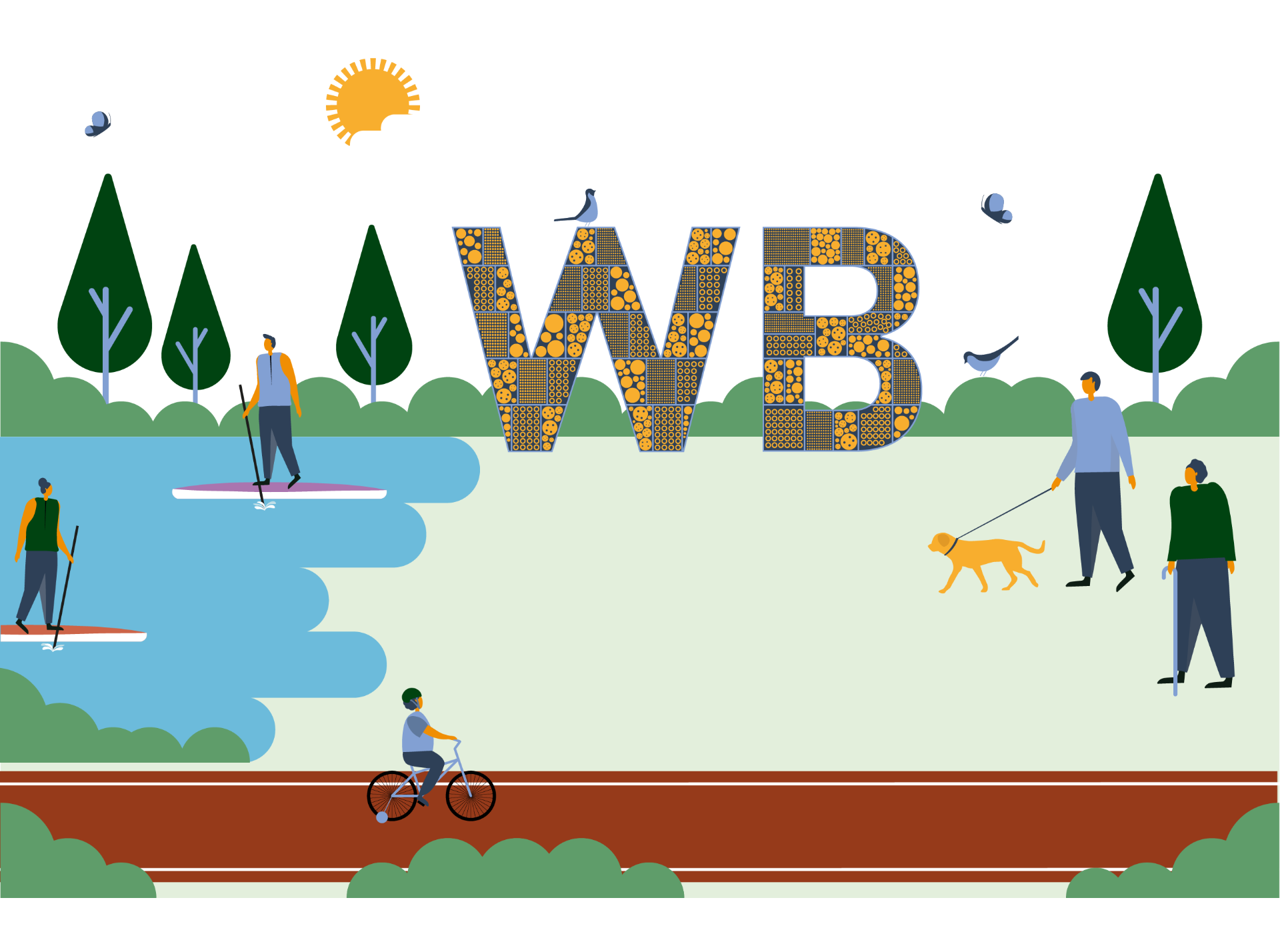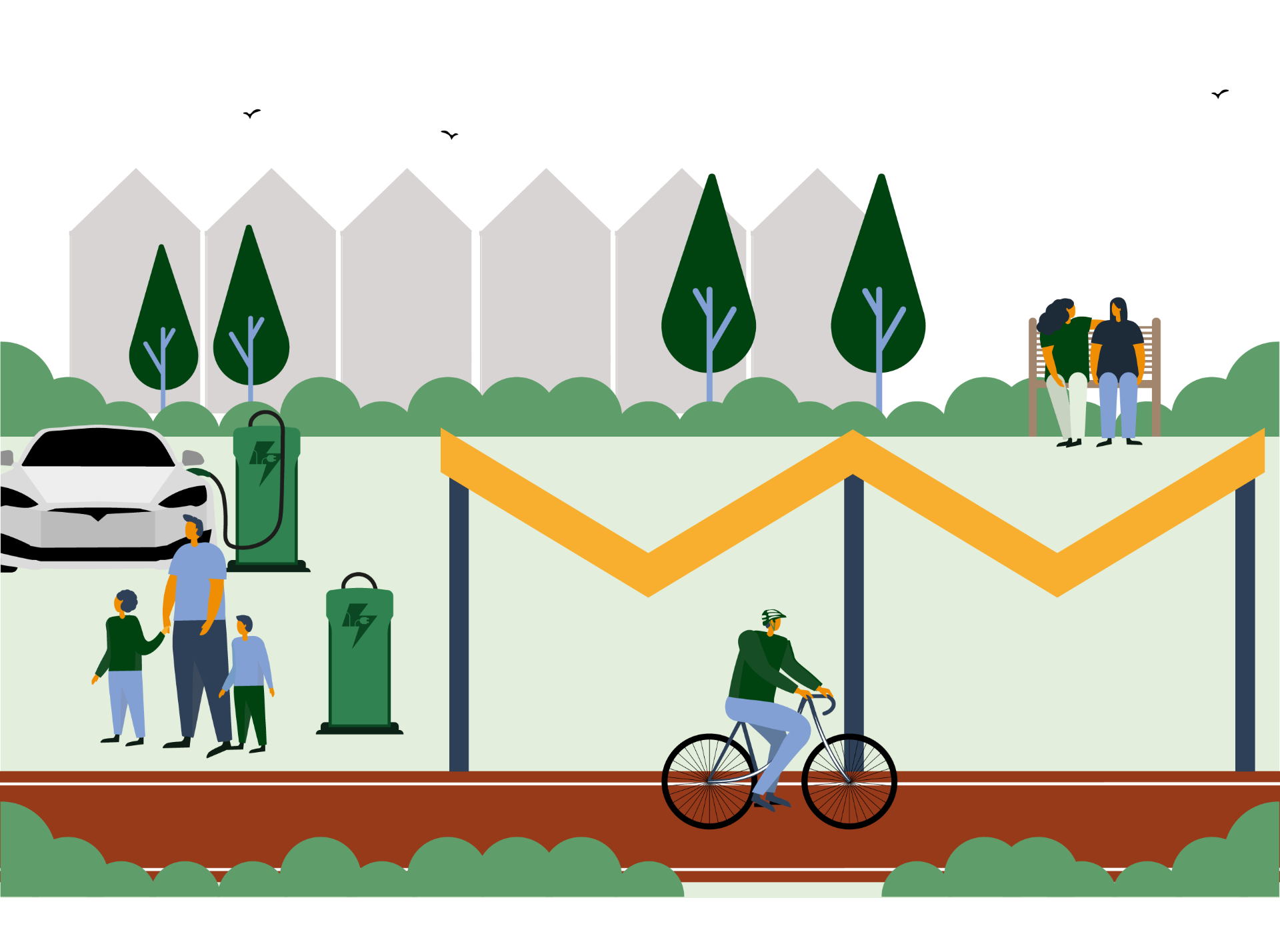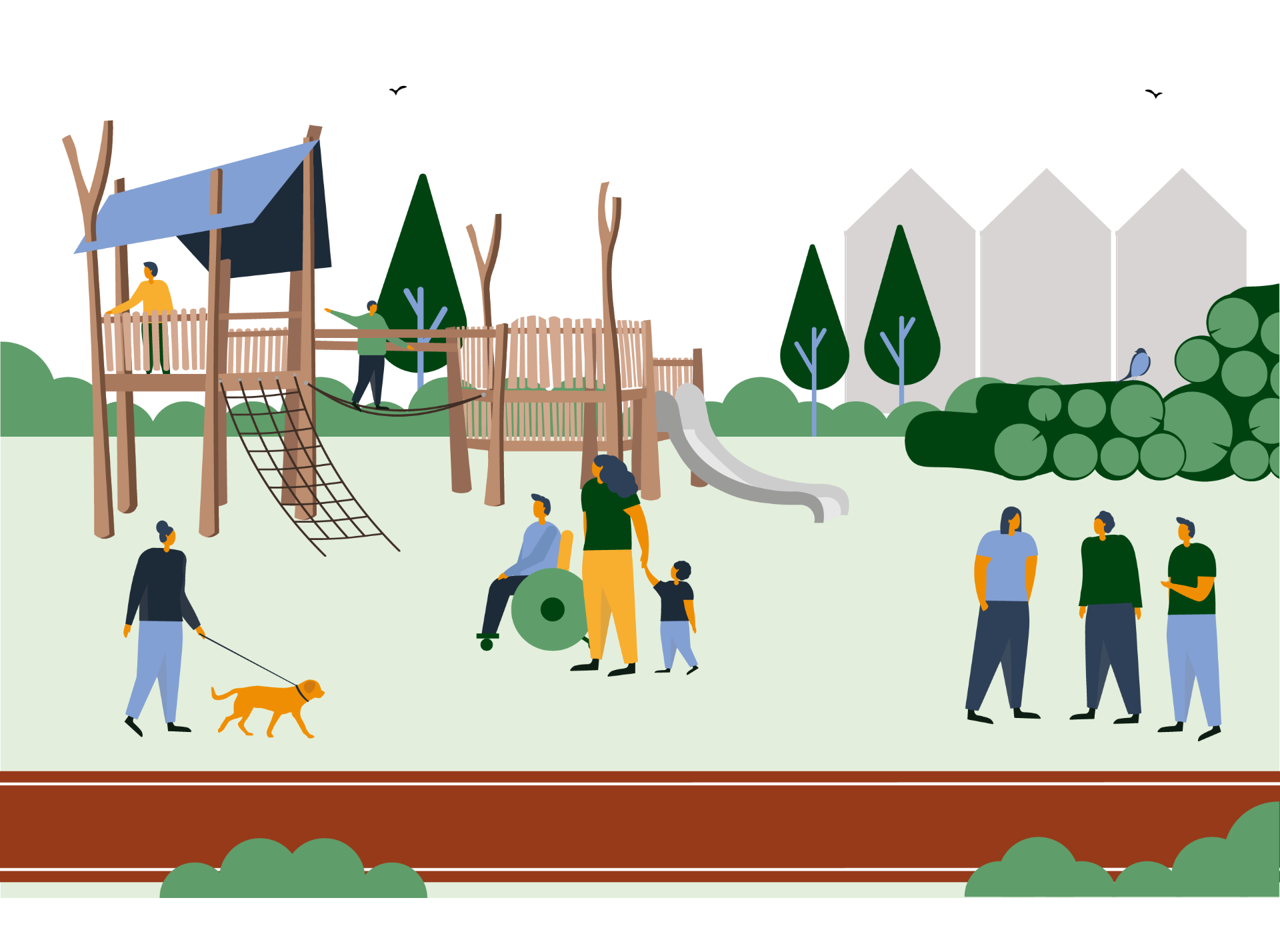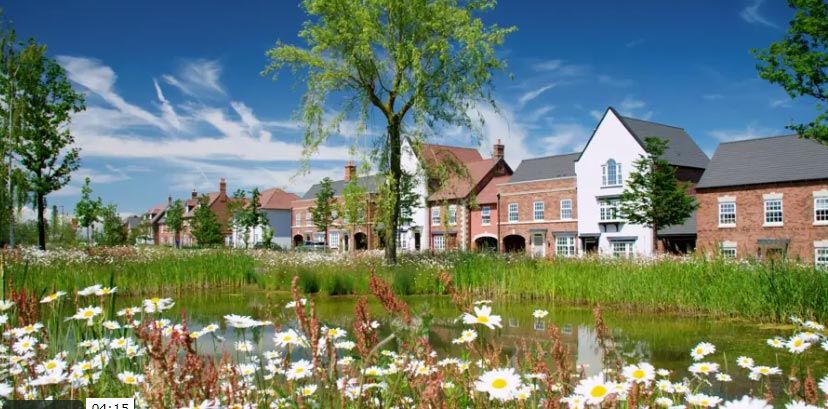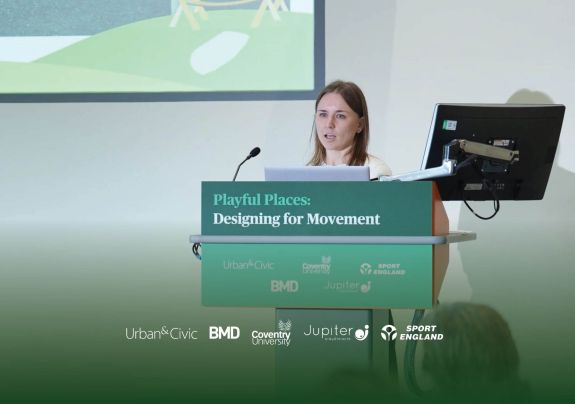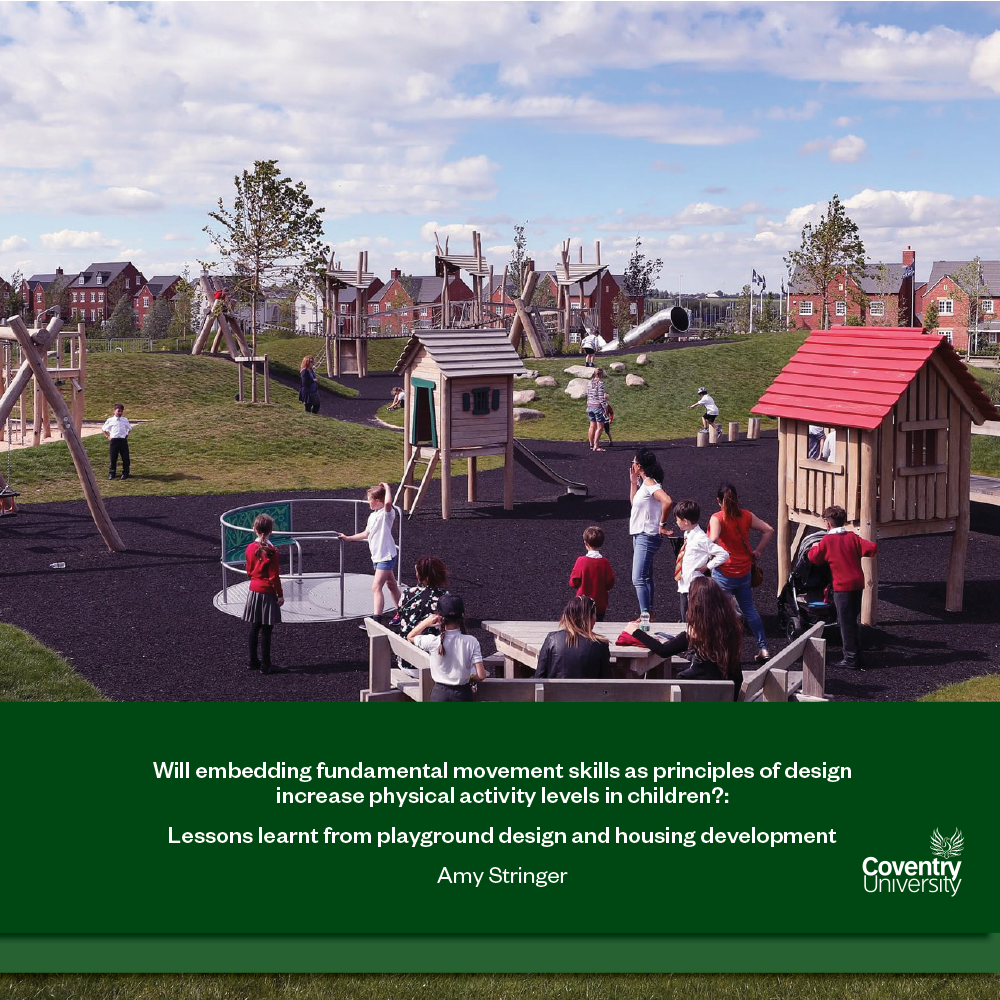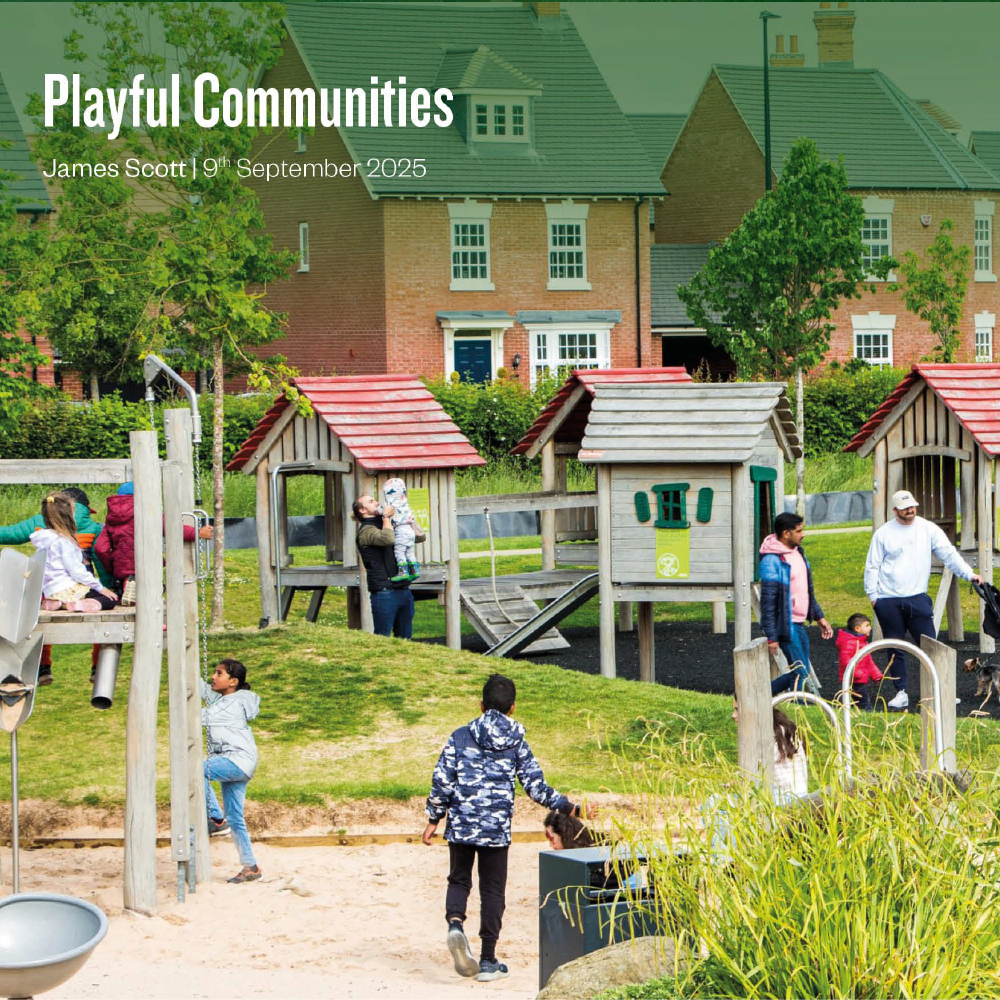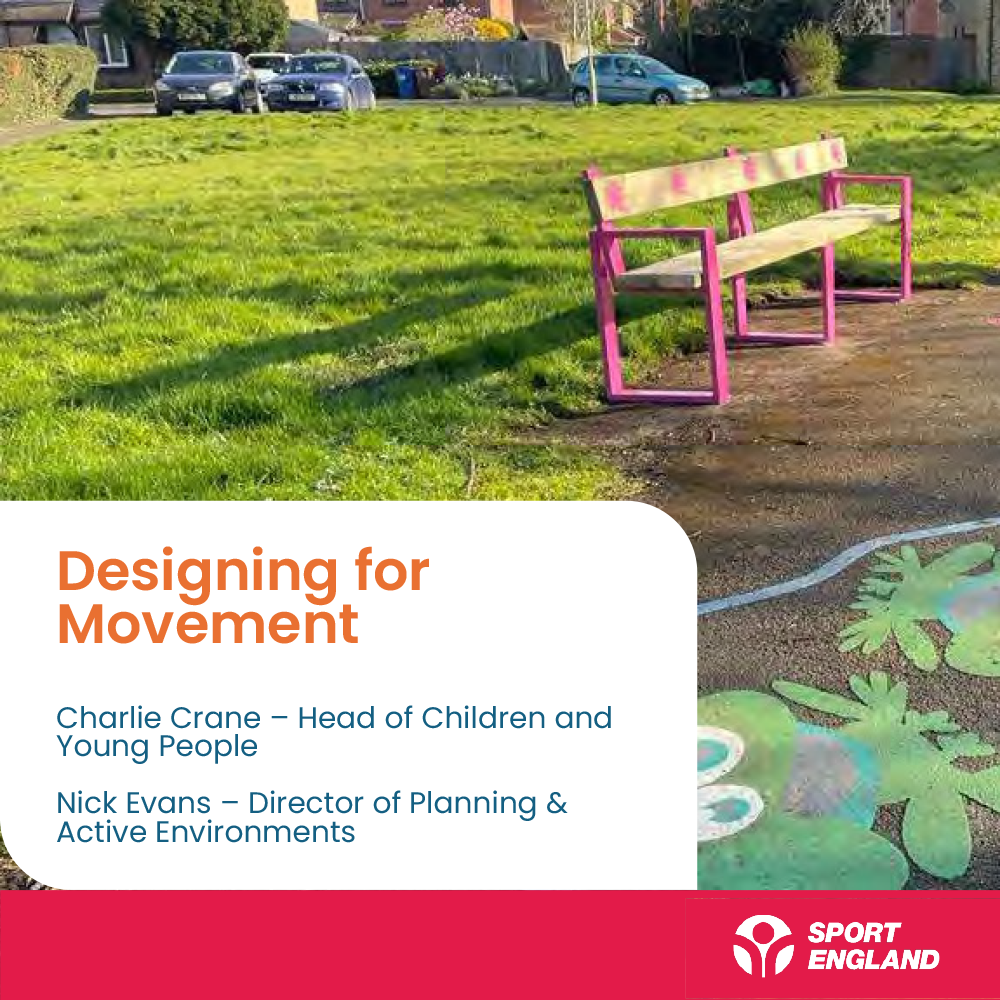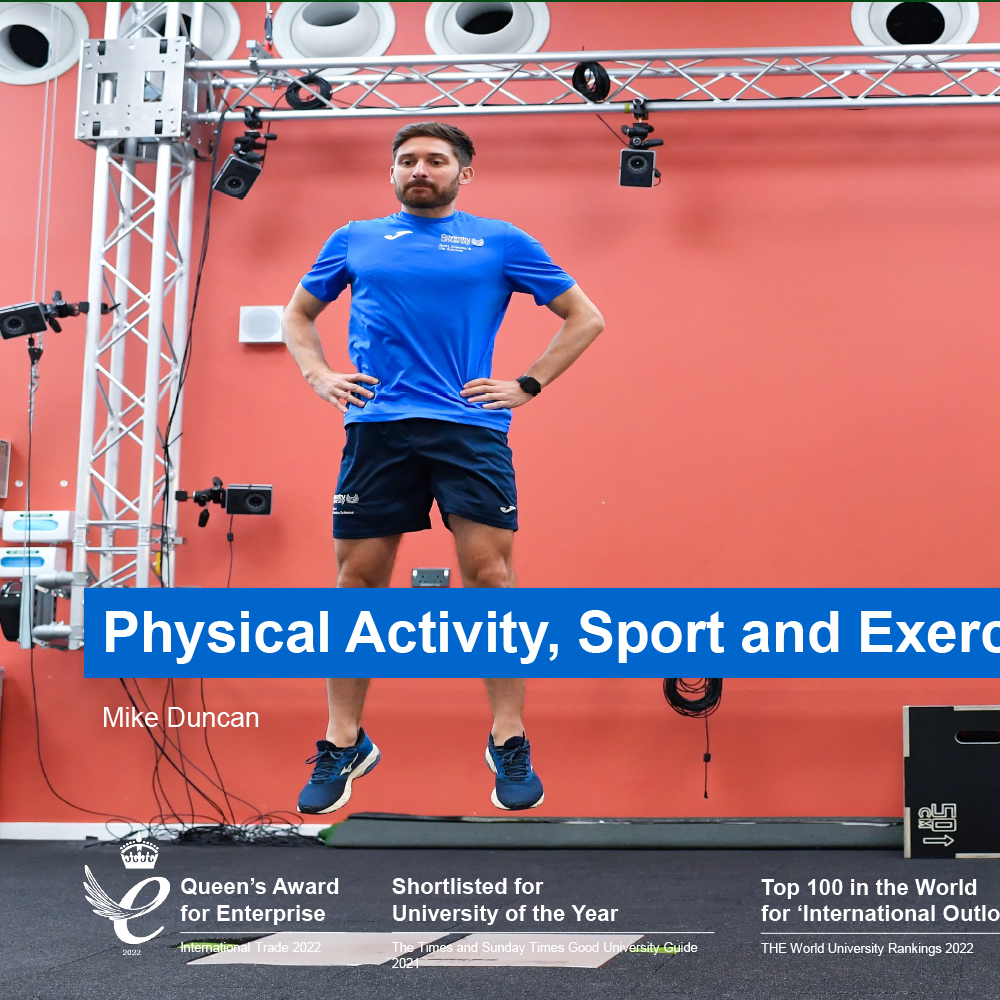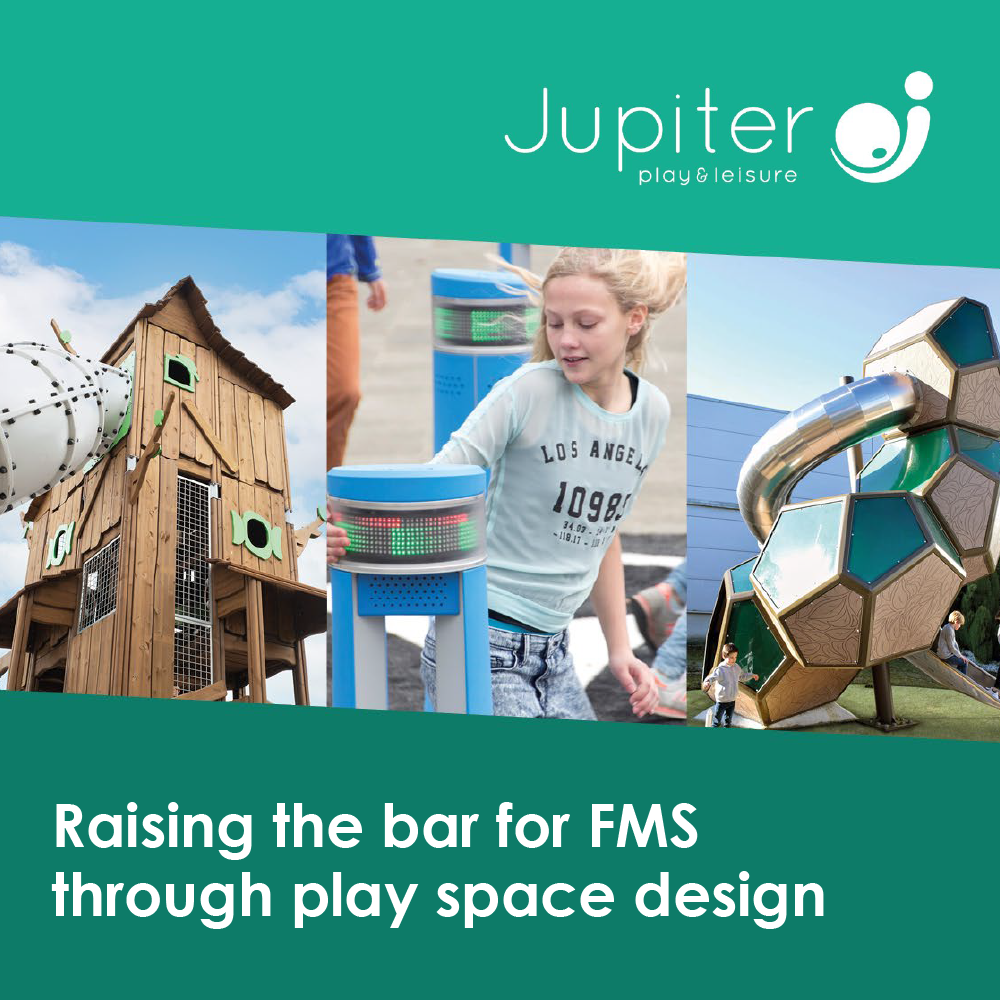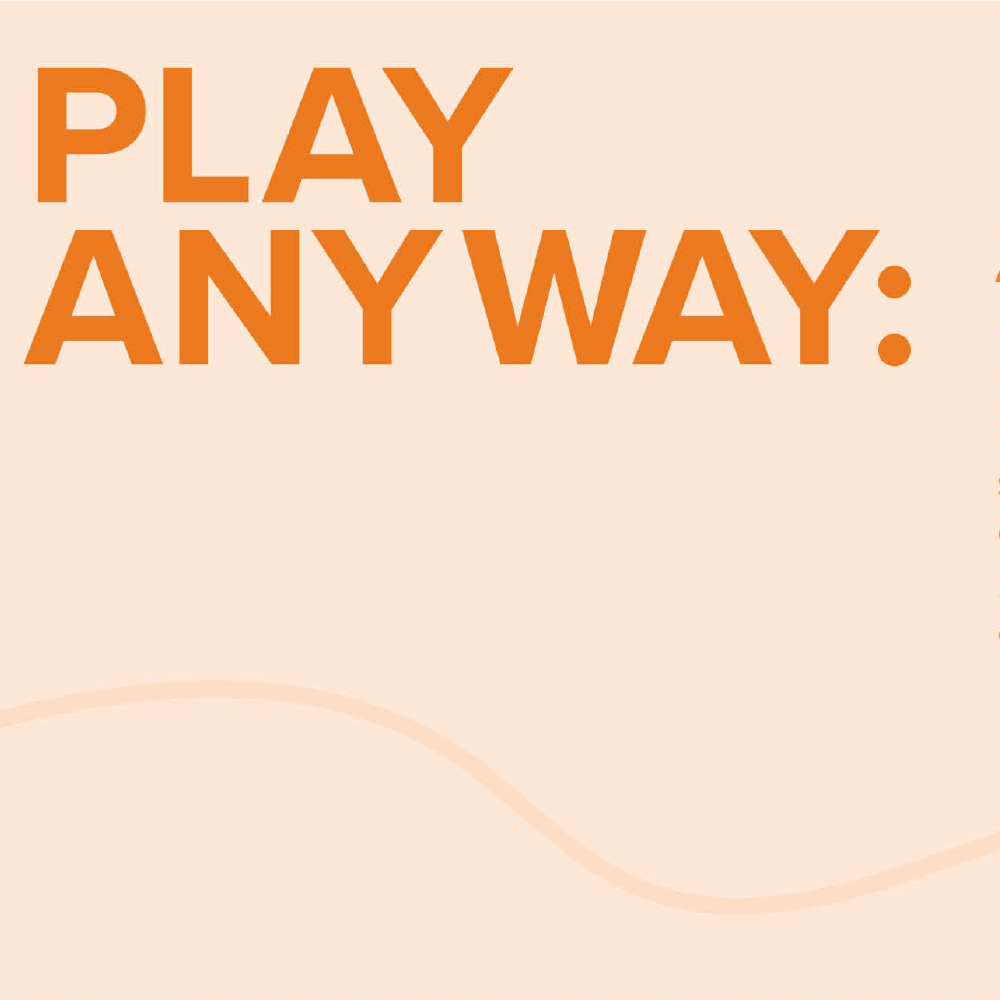An industry conference on September 9th held at Coventry University released findings from a recent PhD study commissioned by Urban&Civic and in partnership with landscape architect Bradley Murphy Design and play space designer Jupiter Play showing how changes to play space design could have a significant impact on children’s health and wellbeing. Specifically,
- Outdoor play spaces have a vital role to play in supporting children’s physical literacy, including their movement, motivation and confidence levels
- Design choices, including landscape use and equipment selection, can enhance health outcomes and skill levels, especially in more deprived communities
- New research highlights how the industry can make better use of terrain and green space to support children’s physical development
The new research from Coventry University is one of just five global studies exploring the relationship between play space design and physical literacy, a term which refers to the degree to which we have a positive and meaningful relationship with movement and physical activity.
While many of the findings may reflect principles already applied in some play spaces, the research reveals there is an opportunity to provide more fundamental movement skills (FMS), which are learned motor patterns that children need to develop, through enhancements to landscaping and overall design.
These skills are a subset of physical literacy, a term regularly cited by Sports England, and are proven to have a significant impact on a child in later life across multiple indicators. For example, a greater level of competency in FMS gained at an early age increases the likelihood of being physically more active in adulthood and can improve school performance, and overall wellbeing.
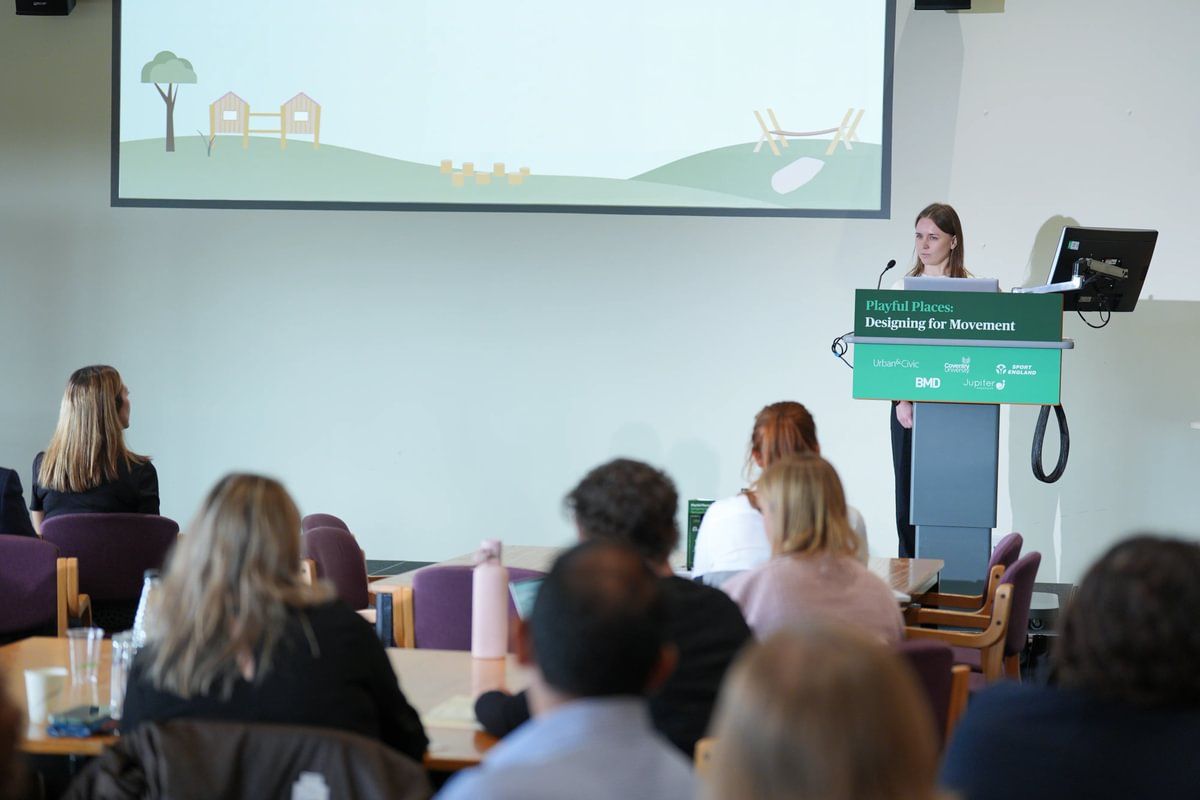
The study and its key takeaways
Led by Dr Amy Stringer from Coventry University’s Research Centre for Physical Activity, Sport and Exercise Sciences, the study was conducted over a three-year period, and included interviews with play space designers, developers and parents, as well as on-site analysis of children’s behaviour at three playgrounds over 720 hours, using video analysis software. The full methodology is included in the appendix.
The research revealed four key takeaways:
Object control skill development
Current playground equipment often lacks opportunities for throwing, kicking, and catching, activities which are crucial to developing FMS. This gap largely exists because 1) the risk of theft prevents play spaces from providing loose balls, and 2) tethered balls pose health and safety concerns. As a result, there is an opportunity for the industry to consider innovative ways to incorporate object-control elements within play environments. Introducing these features could significantly enhance children’s development in areas such as coordination, motor skills, and spatial awareness.
Landscaping matters
Play spaces are often designed as flat, square areas due to lower maintenance costs, but undulating surfaces and varied terrain encourage a wider range of movement, supporting the development of FMS like balance, jumping, climbing and coordination. The research found that simply running in a straight line from one piece of equipment to another doesn’t provide the same developmental benefits.
Quality over quantity
Larger play structures, such as climbing frames, offer significant benefits. Firstly, they are often multifunctional, which means they can incorporate various play values such as climbing, sliding, pulling, and hanging elements that encourage exploration. They also accommodate more children at once, fostering greater social interaction, as well as extended periods of play as research has shown that children tend to play longer on equipment when they are with their peers rather than alone or with an adult.
Larger structures also tend to be easier to maintain. Unlike smaller pieces of equipment such as roundabouts, which require frequent rotation checks, bigger installations generally demand less ongoing upkeep. This therefore suggests that when budgets are limited, it is preferable to invest in a single, well-designed, larger piece over numerous smaller, less engaging items.
Designed for longevity
Many local authorities face budget and resource constraints, leading them to naturally opt for less expensive playground equipment. However, lower-quality materials tend to rust more quickly, resulting in more frequent replacements or, in some cases, equipment not being used at all by children. By taking a more long-term approach to selecting equipment, considering factors like material durability and terrain, local authorities can maximise the impact of their budgets and create play spaces that offer lasting value.
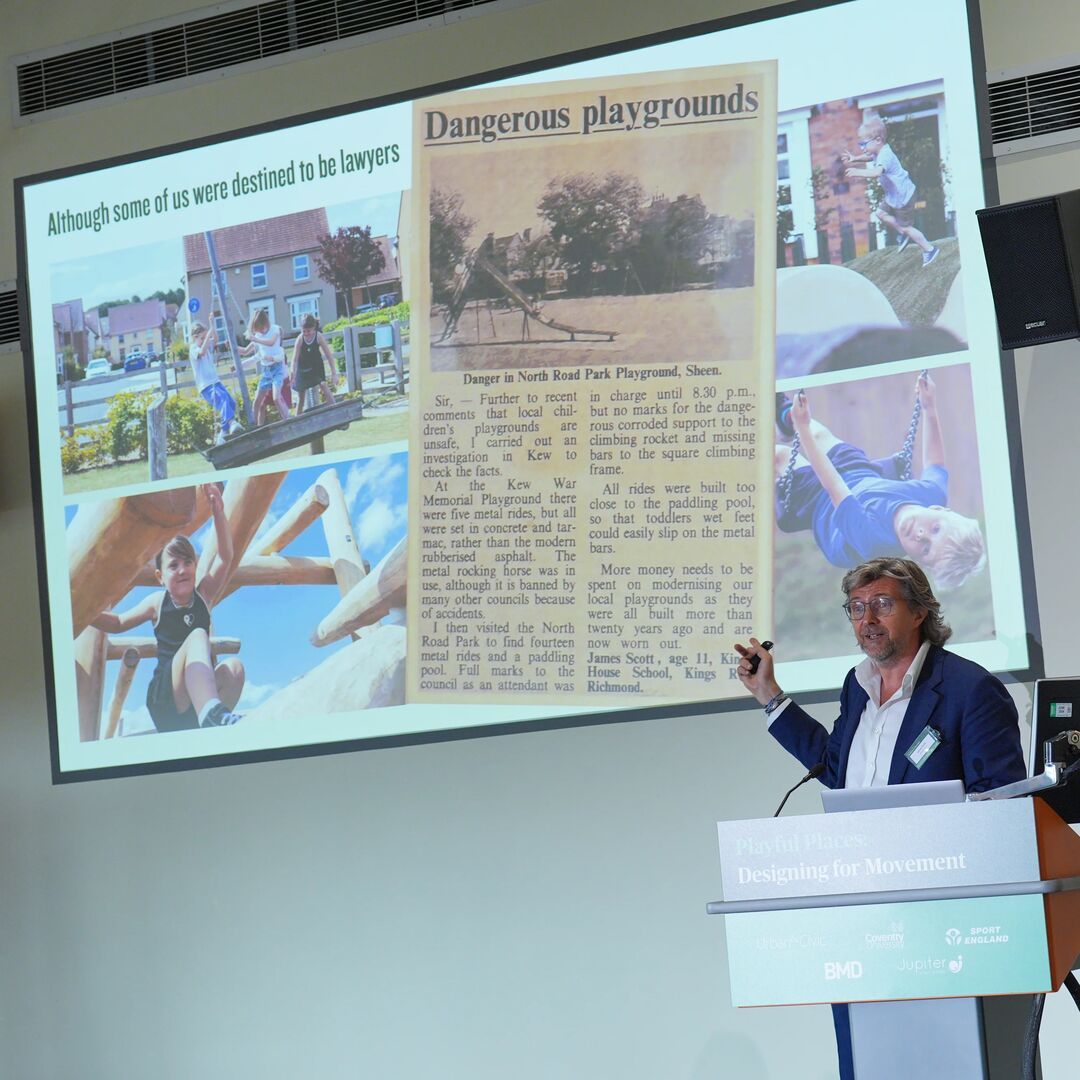
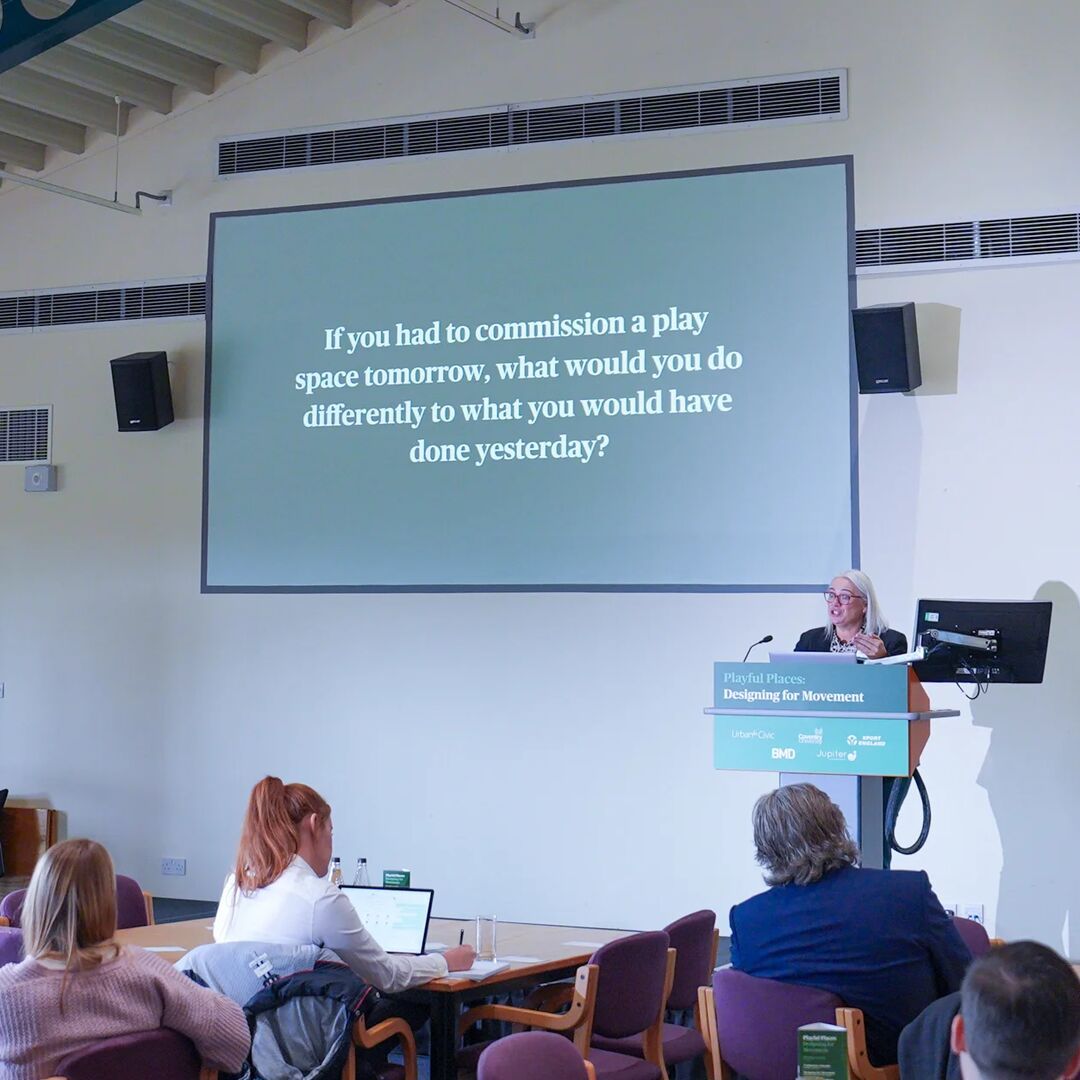

“There is remarkably very little research on play space design. In fact, what we have achieved here represents one of only five studies ever conducted worldwide, and has the potential to profoundly influence the future design of outdoor spaces, shaping the physical literacy of generations to come.
“While local authorities may not all have dedicated play agendas, they are undoubtedly focused on tackling issues such as obesity, deprivation, and education & skills – all areas where play can take a leading role. This research highlights where simple changes, especially when it comes to combining landscape and play, could better support children’s development across a range of settings and we hope it ignites thinking from across the industry more generally around outdoor play and how we can optimise these environments in the future.
Doctor Amy Stringer - Coventry University
“At Urban&Civic, we’ve long understood that play spaces are much more than just equipment, they’re vital infrastructure for healthy, thriving communities. This research with Coventry University shows how good design, from landscape choices to play equipment, can unlock long-term health, social and educational benefits for children. Importantly, it supports our belief that integrating green space and play, as we have done across our sites such as Houlton in Rugby, provides more opportunities for movement, interaction and development, but there is clearly more we could be doing as an industry.
“We don’t believe there is a one size fits all approach to this but we do hope this research inspires more designers, developers and local authorities to consider physical literacy when shaping or assessing play spaces. The should particularly be the case in areas where children have limited access to structured sport or formal coaching. As well as helping to tackle issues such as obesity and loneliness, play parks are powerful social levellers, allowing those without access to more structured activities like gymnastics, or to expensive equipment and coaching, to develop their fundamental movement skills through good design, and in turn benefit from long-lasting improvements in their health and competency levels.”
Johanne Thomas - Regional Director for Communications, Communities and Partnerships at Urban&Civic
